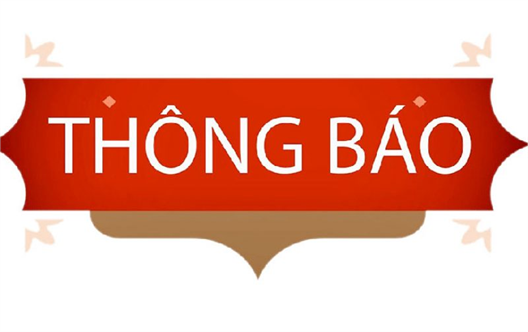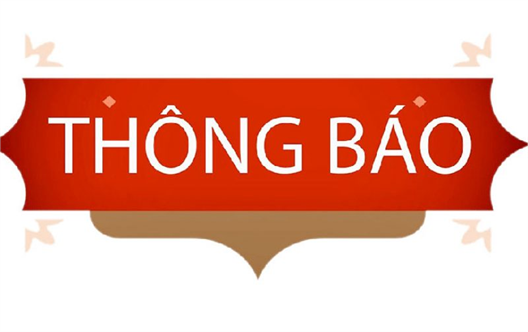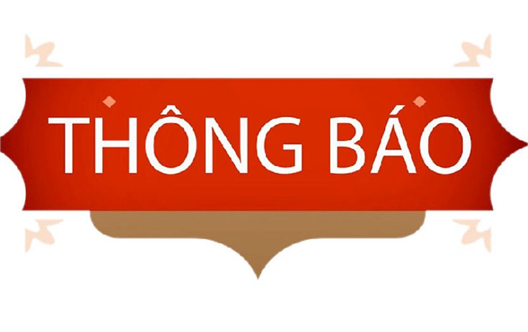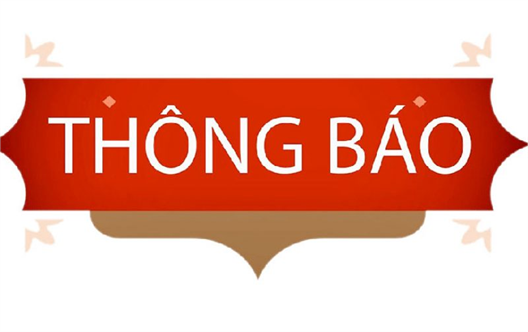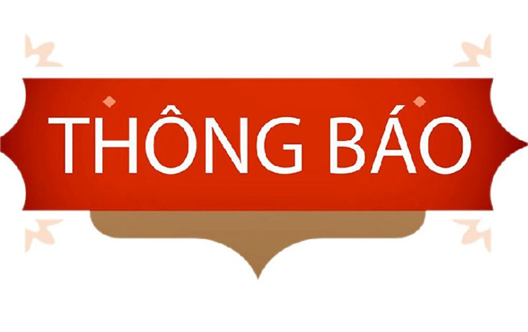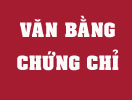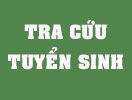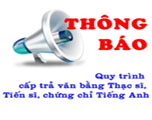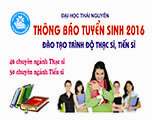Thông tin luận án
Ngày 27-02-2014
Thông tin luận án của NCS Đỗ Thị Hà
Tên đề tài luận án tiến sĩ: “Nghiên cứu hiện trạng đất trống đồi núi trọc tỉnh Thái Nguyên và đề xuất các mô hình phủ xanh đất trống đồi trọc hợp lý”.
Chuyên ngành: Sinh thái học
Mã số: 62 42 01 20
Nghiên cứu sinh: Đỗ Thị Hà
Khóa đào tạo: 2008 - 2012
Người hướng dẫn khoa học:
TS. Đỗ Hữu Thư
TS. Lê Đồng Tấn
Đơn vị đào tạo: Trường Đại học Sư phạm
Cơ sở đào tạo: Đại học Thái Nguyên
NHỮNG KẾT QUẢ MỚI CỦA LUẬN ÁN
1. Trong đất của ba loại đất trống đồi núi trọc (loại I, loại II, loại III) ở khu vực nghiên cứu đã gặp 6 nhóm vi sinh vật (vi khuẩn, vi nấm, xạ khuẩn, vi khuẩn cố định đạm, vi sinh vật phân giải xenlulo và vi sinh vật sinh màng nhày) tổng số vi khuẩn tăng lên theo thời gian từ năm thứ nhất đến năm thứ tư.
2. Trong ba loại đất trống đồi núi trọc (ĐTĐNT) của khu vực nghiên cứu đã gặp 18 loài giun đất và 10 nhóm Mesofauna khác. Sự phong phú của động vật đất biến đổi rõ rệt theo từng loại ĐTĐNT ở tỉnh Thái Nguyên. Động vật đất ở các điểm nghiên cứu thuộc xã Yên Ninh là phong phú nhất, tiếp theo là xã Yên Đổ. Trong khi đó, động vật đất ở các điểm nghiên cứu của xã Tân Long rất nghèo nàn.
3. Thành phần thảm thực vật ở Thái Nguyên thu được 4 kiểu thảm thực vật: Rừng kín, rừng thưa, thảm cây bụi và thảm cỏ.
4. Thành phần thực vật trong điểm nghiên cứu có 828 loài thuộc 5 ngành, 141 họ, 479 chi. Các loài thực vật được xếp vào 5 nhóm dạng sống cơ bản: Nhóm cây có chồi trên mặt đất (Ph), nhóm cây chồi sát mặt đất (Ch), nhóm cây nửa ẩn (He), nhóm cây chồi ẩn (Cr) và nhóm cây sống một năm (Th). Chúng tôi đã lập phổ dạng sống hệ thực vật ở điểm nghiên cứu là:
SB = 70,55Ph + 8,26Ch + 24He + 9,72Cr + 14Th
5. Tính chất vật lý, hóa học và dinh dưỡng của đất thay đổi theo thời gian ở các loại ĐTĐNT. Độ ẩm, độ xốp thay đổi ở từng nhóm ĐTĐNT cụ thể ở ĐTĐNT loại I là 42 %; loại II là 26,1 %; loại III là 31 % ở tầng 0-10 cm. Hàm lượng mùn, đạm thay đổi ở từng loại ĐTĐNT ở xã Yên Ninh (huyện Phú Lương) cao nhất là 0,43 % thấp nhất là 0,16 % ở xã Tân Long (huyện Đồng Hỷ). Các chất dễ tiêu như tổng số và tổng số cũng thay đổi ở từng loại ĐTĐNT như ở điểm xã Yên Ninh thuộc ĐTĐNT loại I là 0,13 mg/100 g đất khô (0-10 cm); ĐTĐNT loại II là 0,046 mg/100 g đất khô (0-10 cm); ĐTĐNT loại III là 0,018 mg/100 g đất khô (0-10 cm).
6. Đề xuất các mô hình phủ xanh để nhằm phục hồi độ ẩm, độ phì của đất đồng thời tăng độ che phủ rừng, nâng cao đời sống cho các hộ dân trong vùng.
- Xây dựng mô hình thực nghiệm;
- Xây dựng mô hình phủ xanh ĐTĐNT;
- Đề xuất các giải pháp phủ xanh (giải pháp kỹ thuật, chính sách, tổ chức đầu tư về vốn);
- Tuyển chọn và xác định cơ cấu cây trồng cho vùng núi đất và núi đá.
KHẢ NĂNG ỨNG DỤNG TRONG THỰC TIỄN VÀ NHỮNG VẤN ĐỀ CÒN BỎ NGỎ CẦN TIẾP TỤC NGHIÊN CỨU
* Khả năng ứng dụng trong thực tiễn:
Luận án đã phân loại ba nhóm ĐTĐNT để từ đó xác định mức độ và phương thức tác động trong việc đưa mô hình phủ xanh ĐTĐNT một cách hiệu quả. Đó là các vấn đề có thể ứng dụng cho thực tiễn lựa chọn mô hình phủ xanh. Các nghiên cứu về tính chất vật lí, hoá học, sự thay đổi số lượng vi sinh vật, động vật đất ở từng nhóm ĐTĐNT của tỉnh Thái Nguyên sau khi đưa mô hình thử nghiệm vào triển khai. Đây là đóng góp mới vào công cuộc phủ xanh ĐTĐNT của tỉnh Thái Nguyên nói riêng và các tỉnh miền núi trung du Bắc Bộ nói chung.
* Những vấn đề còn bỏ ngỏ cần tiếp tục nghiên cứu:
Cần mở rộng hướng nghiên cứu sang các tỉnh lân cận, đồng thời triển khai các quy trình, giải pháp phủ xanh ĐTĐNT. Đây là cách tiếp cận hứa hẹn có nhiều thành công trong việc bảo vệ phát triển tài nguyên rừng. Do đó, cần tiếp tục nghiên cứu kỹ lưỡng về hiện trạng ĐTĐNT để từ đó lựa chọn các mô hình phủ xanh.
INFORMATION OF DOCTORAL DISSERTATION
Research title: “Studying on the actual status of bare land and denuded hills in Thai Nguyen province and proposing reasonable greening patterns for bare land and denuded hills”.
Major: Ecology
Code: 62 42 01 20
PhD. Candidate: Do Thi Ha
Training course: 2008 - 2012
Scientific supervisors:
1. Do Huu Thu, PhD
2. Le Dong Tan, PhD
Training institution: College of Education - Thai Nguyen University
THE NEW SCIENTIFIC FINDINGS
1. In 3 types of bare land and denuded hills (type I, type II and type III) in the study sites, there are 6 groups of microorganisms (bacteria, fungi, actinomycetes, nitrogen-fixing bacteria, microorganisms of cellulose resolution, microorganisms in mucous membrane) and total bacteria have increased over time from the first year to the fourth year.
2. There are 18 species of earthworms and 10 other Mesofauna groups in 3 types of bare land and denuded hills in the study sites. The abundance of soil fauna changes markedly under each type of bare land and denuded hills in Thai Nguyen province. Soil fauna at the study sites in Yen Ninh commune is the most abundant, followed by Yen Do commune. Meanwhile, soil fauna in the study sites of Tan Long commune are very poor.
3. The components of the plant cover in Thai Nguyen have obtained four vegetation types: the closed forest, the sparse forest, the shrub vegetation and lawns.
4. Components of plants in study sites have 828 species including 5 phylums, 141 families and 479 genuses. They are classified into five basic groups of life forms such as the group of plants available buds above ground (Ph), the group of plants available buds close to ground (Ch), group of plants available half-hidden buds (He), the group of plants available hidden buds (Cr) and the group of plants living for one year (Th). We establish spectrum of flora life forms in study sites as follows
SB = 70.55Ph + 8.26Ch + 24He + 9.72Cr + 14Th
5. Physical and chemistry properties and nutrient of soil change over time in the types of bare land and denuded hills. Humidity and porosity changes from specific groups of bare land and denuded hills namely: type I, type II and type III in the 0-10cm layer of bare land and denuded hills account for 42 %, 26.1 % and 31 % consecutively. The highest rate of humus and nitrogen changing in each type of bare land and denuded hills in Yen Ninh commune (Phu Luong district) is 0.43 % and the lowest rate of these in Tan Long commune (Dong Hy district) is 0.16 %. The substances easily consumed such as total and total are also to change in each type of bare land and denuded hills. Those in type I, type II and type III of bare land and denuded hills in Yen Ninh commune are 0.13 mg/100 grs of dried soil (0-10 cm), 0.046 mg/100 grs dried soil (0-10 cm) and 0.018 mg/100 grs of dried soil (0-10 cm) consecutively.
6. Proposing greening patterns to restore moisture, soil fertility and to increase forest cover and to improve living standards for households of residents in the area
- Developing the pilot pattern;
- Developing greening pattern for bare land and denuded hills;
- Proposing greening solutions (solutions on technique, policies and organization on capital investment);
- Selecting and determining the plant structure for soil and rocky mountains.
PRACTICAL APPLICABILITY AND ISSUES NEEDING FOR FURTHER STUDIES
* Practical applicability:
In this study, there are 3 types of bare land and denuded hills classified which leads to determine the effect methods in greening patterns for bare land and denuded hills in efficiency. These are issues able to apply for practical selection of greening patterns. Studies on properties of physics, chemistry, change of quantity of organisms, soil fauna in each type of bare land and denuded hills of Thai Nguyen province after pilot patterns used and deployed. This is a new contribution in greening field for bare land and denuded hills of Thai Nguyen province in particular and the northern mountainous and midland provinces in general.
* Issues needing for further studies:
It is necessary to expand research to neighboring provinces and to deploy processes greening for bare land and denuded hills. This is an approach available promise to be more successful in the protection and development of forest resources. Therefore, it is necessary to continue thorough research on the actual status of bare land and denuded hills from which greening patterns are chosen.
Nội dung luận án, xem tại đây.
